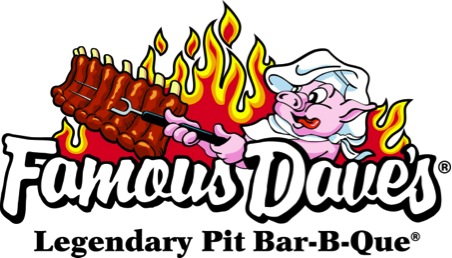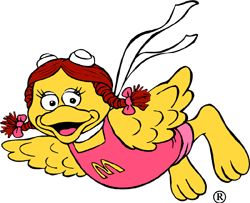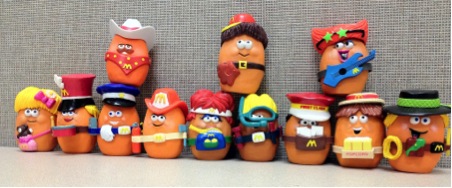In the loathsomely normative geeky/blokey britcom Frequently Asked Questions about Time Travel, two of the central characters earn their living dressed as the anthropomorphic dinosaur mascots of a fictional burger chain named Dino-burger. The meat constituent of this chain’s burgers, we are lead to understand, poses as dinosaur meat, and one of the characters exasperatedly protests that it thereby makes no sense for them to be in dinosaur costumes. That is, if they were dinosaurs, the food they are urging people to eat would necessitate their slaughter. This musing is deployed in a double movement which on the one hand coerces the film’s spectator to actually start thinking about something critically, while on the other — in fine Anglo-Saxon tradition — swiftly precludes such analysis from getting very far by attributing these words to a character who “thinks too much” in his endless pontificating on trivial matters, which he records in a notebook throughout the film. However, despite the film’s creators deploying this observation as one of many throwaway sub-Kevin Smith “just-some-guys-shooting-the-shit’” remarks, the ostensible paradox concerning anthropomorphic animals in the advertising of meat products which it indicates might actually be worth dwelling upon.
It is an easy assumption to make that, as science historians Lorraine Daston & Gregg Mittman argue in Thinking With Animals: New Perspectives on Anthropomorphism, anthropomorphism points to the notion that “animals are like us, despite obvious differences of form, food, and habitat.” Conversely, for many people the disavowal of this possibility is what allows them to eat meat at all. Challenge a proud carnivore as to why it’s acceptable to kill and eat another conscious entity, and usually the justification will revolve around the idea that animals are of some lower order; qualitatively inferior to humans as beings; not ‘like us’ at all. The idea that anthropomorphism entails the opposite implication, then, suggests that it is incompatible with human carnivorousness, and that, say, enlisting Foghorn Leghorn in the promotion of KFC (as the fast food chain did in a series of ‘80s commercials) is a woeful marketing misstep. Indeed, Daston & Mittman pose the question of whether humans “ought to embrace vegetarianism . . . for the same reasons that cannibalism . . . should be rejected as ethically repugnant” as one which arises from anthropomorphism. Yet, the promotion of meat products by cartoon animals is an enduring stratagem in advertising. From the aforementioned alliance of Foghorn Leghorn and KFC to the pig mascot of the BBQ restaurant chain Famous Dave’s, chirpy animals consistently seem intent on selling dead parts of their brothers and sisters with a smile.
 However, this seeming paradox might not in fact pose such a problem if we consider the idea that the dissociation of meat from its animal origins is actually the reason why a lot of people do not have ethical qualms about eating it. Those who are most vocal in their defense of carnivorousness often appeal to hierarchical notions which posit humanity’s status at the top of the food chain as justified by our basic superiority. I would argue, though, that far more people just ignore the fact that their food was ever part of a conscious entity. This is why innumerable families aren’t thrown into an insurmountable aporia when chowing down on a chicken TV dinner and simultaneously imploring that a gazelle evades the clutches of a hungry lion to the dulcet tones of David Attenborough. People simply do not think about the fact that something needed to die for their meal, and it might be that having an anthropomorphic mascot happily promote said meal actually enforces this dissociation. That is, because setting a living animal within the same context as the product which results from its death asserts the latter’s status as food, divorcing it from the act of killing which is the condition of its inception, and from which it is often already distanced in being processed to the extent that it doesn’t whatsoever resemble any part of the animal from whose flesh it is formed.
However, this seeming paradox might not in fact pose such a problem if we consider the idea that the dissociation of meat from its animal origins is actually the reason why a lot of people do not have ethical qualms about eating it. Those who are most vocal in their defense of carnivorousness often appeal to hierarchical notions which posit humanity’s status at the top of the food chain as justified by our basic superiority. I would argue, though, that far more people just ignore the fact that their food was ever part of a conscious entity. This is why innumerable families aren’t thrown into an insurmountable aporia when chowing down on a chicken TV dinner and simultaneously imploring that a gazelle evades the clutches of a hungry lion to the dulcet tones of David Attenborough. People simply do not think about the fact that something needed to die for their meal, and it might be that having an anthropomorphic mascot happily promote said meal actually enforces this dissociation. That is, because setting a living animal within the same context as the product which results from its death asserts the latter’s status as food, divorcing it from the act of killing which is the condition of its inception, and from which it is often already distanced in being processed to the extent that it doesn’t whatsoever resemble any part of the animal from whose flesh it is formed.
 That anthropomorphism in meat product advertising is conducive to such dissociation becomes even clearer if we turn to another expression of this stratagem in such commercials — the anthropomorphism of the meat products themselves. A paradigmatic example of this can be found in the marketing for McDonalds, which throughout its history has consistently transformed the fast food chain’s foodstuffs into humanoids. In countless commercials, hamburgers and chicken nuggets have been afforded facial features and/or limbs and frolic merrily with Ronald McDonald in McDonaldland. This surely draws attention away from the fact that these foodstuffs were once part of living animals; positing them as complete in-themselves. Reflection on the fact that McNuggets are comprised of fried meat slurry which once constituted the breast of a chicken is precluded when the McNugget is grinning at you and wearing a cowboy costume. Also, in the case of McDonalds, this was for a time reinforced by the presence of their fellow mascot Birdie the Early Bird. That is, the McNuggets’ origin in slaughter was not only clouded by their apparent autonomy as beings, but by the above delineated dynamic of their existing in the same context as a living animal whose death would be necessary for this existence, but who seemed perfectly chipper nonetheless.
That anthropomorphism in meat product advertising is conducive to such dissociation becomes even clearer if we turn to another expression of this stratagem in such commercials — the anthropomorphism of the meat products themselves. A paradigmatic example of this can be found in the marketing for McDonalds, which throughout its history has consistently transformed the fast food chain’s foodstuffs into humanoids. In countless commercials, hamburgers and chicken nuggets have been afforded facial features and/or limbs and frolic merrily with Ronald McDonald in McDonaldland. This surely draws attention away from the fact that these foodstuffs were once part of living animals; positing them as complete in-themselves. Reflection on the fact that McNuggets are comprised of fried meat slurry which once constituted the breast of a chicken is precluded when the McNugget is grinning at you and wearing a cowboy costume. Also, in the case of McDonalds, this was for a time reinforced by the presence of their fellow mascot Birdie the Early Bird. That is, the McNuggets’ origin in slaughter was not only clouded by their apparent autonomy as beings, but by the above delineated dynamic of their existing in the same context as a living animal whose death would be necessary for this existence, but who seemed perfectly chipper nonetheless.
Framing anthropomorphism like this, we should recall the Marxian-Adornian critique which identifies its form under late capitalism as a symptom of unreflective post-Enlightenment rationality. That is, because I am suggesting that the humanization of both animals and processed meat works in the service of a petrified façade which disavows the horror necessary for the fast food industry’s perpetuation. While the notion of engendering identification with an animal in order to sell its dead flesh might be conceived of as paradoxical in theory, in practice it clearly does not deter people from devouring this dead flesh, and I think the idea that it in fact obfuscates the nature of dead flesh might go some way to explaining why this is so.
This post may contain affiliate links.










